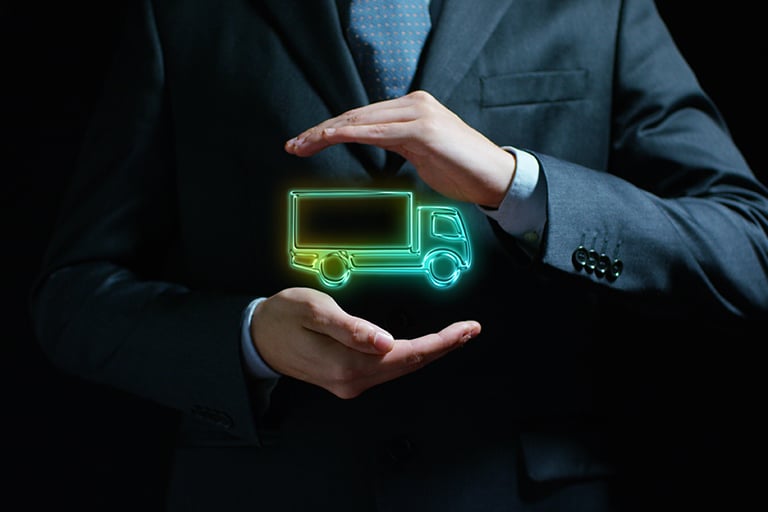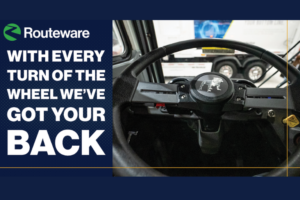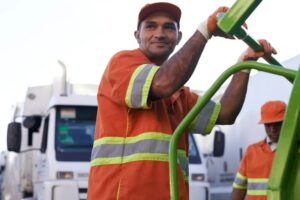With fuel prices soaring and recession fears looming, future-proofing to the extent possible is on the minds of solid waste leaders everywhere.
Forward-thinking haulers have used technology to help navigate COVID-19, and their resilience highlights a path forward: through the rest of the pandemic, and into the economic fray growing on the other side.
The most stable municipalities and haulers rely on modern, field-proven smart tools to help them gain efficiencies, balance budgets, and continue to provide high-quality essential services to their communities. Here’s a look at how.
Get smart, Get resilient
From Michigan to Florida, and from South Carolina to California, the labor shortage has left many waste haulers struggling to complete routes and fulfill commitments to residents and customers. Between the proverbial rock and hard place, the shortage has caused some haulers to breach contracts and face fines for non-performance. In the most discouraging scenarios, carts have been left to rot at the curb.
To avoid situations such as these, many haulers have invested in new and updated technology solutions. Smart fleets using in-cab computers, running optimized routes, and capturing revenue-generating information at the collection point may need fewer drivers to begin with.
They’re also in a better position to continue and improve service delivery, thereby building trust with residents and brand loyalty with customers.
In fact, according to Worldbank, governments further along the path to digital transformation were more resilient, with fewer service disruptions, when 2020 landed on our collective doorstep with a thud.
Relieve the staffing pinch
The pandemic continues to augment staffing issues and impact disposal behavior across the globe in ways we are still working to understand.
During stay-at-home orders, people disposed of more waste where they live, which increased municipal solid waste (MSW) by about 20 percent—a big deal for haulers when an additional trip to the landfill takes about an hour. While tonnages have leveled off, an increase of five to 10 percent in MSW over pre-pandemic levels may persist due to increased remote work and schooling.
In the municipal sector, driver absences due to illness and isolations (“quarantine”) can create a dilemma about which essential services the available staff should attend first. When supervisors and drivers in other departments pinch-hit for absent solid waste staff, necessary work may be left undone. Even worse, the resulting operational disruption can culminate in citizen upset and increased pressure to perform for an already overburdened department.
Solid-waste specific technologies can help. Paperless route optimization plays an important role in right-sizing the fleet so that extra routes don’t cause unnecessary strain on staffing (or the budget). Plus, route optimization ensures routes are deliverable in practice—not just theory—as well as more efficient.
When staffing levels are low, the right fleet equipment—including on-board computers (tablets) that provide electronic routing and mapping, as well as turn-by-turn navigation and real-time connection to the back office—empower pinch-hitters and new drivers get up to speed faster, work more efficiently with less training, and feel more confident and supported on the road. With turn-by-turn directions, someone who’s never run a route can complete it just like the regular driver by following the bouncing pin on the map.
In addition, by using data and proven route design tools, haulers can ensure that customer satisfaction doesn’t suffer as drivers do more with less. Likewise, using data gathered from on-board computers allows supervisors to measure driver performance against their own standard rather than irrelevant industry averages, providing helpful, specific coaching information for continuous improvement.
Successfully compete for the best driving talent
In the consumer world, the virus has changed our buying habits, resulting in a sharp uptick in online shopping and greater dependence upon delivery services, increasing the number of last-mile driving jobs and heightening competition among organizations seeking short-haul drivers.
“There are a lot more driver options now,” David Biderman told Route Fifty. Biderman is executive director and CEO of the Solid Waste Association of North America (SWANA).
Competition has become so intense, in fact, that some haulers are touting the kind of five-figure sign-on bonuses previously reserved for Wall Street, according to an August article from Bloomberg. While bonuses may attract drivers in the short term, it’s worth considering that job-hopping could arise as an unintended consequence over the long term. On the other hand, bonuses sometimes fail to attract new talent, as drivers perceive that employers may create unreasonable performance stipulations for actual payout.
Operators of smart fleets have a distinct advantage in recruiting in these conditions because they can tout unique driver benefits.
For example, many solid waste drivers choose to haul trash as opposed to working in long-haul trucking so that they’re home every night. These drivers also want to know what time they’re going to get off work. Intuitive smart trucks and on-board computers prevent “go-backs” to pick up late set-outs, which universally frustrate drivers and often force them to work later than they planned.
In addition, the significant savings that smart fleets create can be used to fund recruitment efforts and to pay drivers higher wages overall. Savings stem from multiple increased efficiencies—including lower call volumes—plus increased “extras” revenue through service verification and additional savings from back-office automations.
Meet growing collection needs the easy way
Many haulers need drivers to serve new recycling and organics collection programs aimed at diverting waste from landfills and reducing methane emissions.
In 2022 and beyond, California drivers will haul organic materials to an estimated 90 new facilities (CalRecycle’s early estimate in 2017), some of which already have been built, to comply with Senate Bill 1383 that requires jurisdictions to provide organics collection programs and measure their outcomes.
Geographically shifting populations are changing service delivery requirements, too.
Route optimization tools can make shrinking routes more efficient. In areas where routes are growing, digital service verification stops revenue leaks and enables haulers to charge for extras. Without requiring drivers to work longer or faster, these tools’ typical savings are on the order of 15 percent. With fuel prices in some areas more than double in 2022 what they were in 2020, it’s a safe bet that 15 percent is a conservative savings estimate today.
To the future—and beyond
Three years ago, we suggested on our blog that the right technology helps organizations address the driver shortage. It’s still true.
Technology not only helps haulers get and keep more diverse, talented people in the driver’s seat, it also addresses a number of other pressing issues, including rising fuel prices and increasing service demand.
With tough times behind us and potentially more of the same ahead, capital investment in dependable technology continues to be the waste industry’s best recourse.
Learn more. Now is the time to future-proof your solid waste organization with digital tools for smart cities and haulers. Let’s talk!





